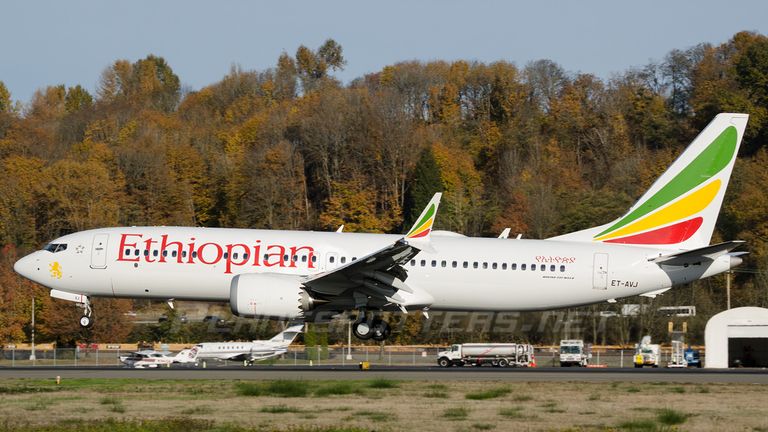
When Noelle Jalal was a child, her uncle used to take her to the international airport in Addis Ababa to watch the giant Ethiopian Airlines Boeings come and go.
For years, the airport in Ethiopia’s capital was not just a hub for travellers: It was also a weekend destination for families like Ms. Noelle’s who came to see the first Boeings piloted by Africans.
Families took out-of-town visitors to the airport tower. Parents bought their children cotton candy and let them dash around the terminal’s corridors to work off the sugar high.
“Everyone I grew up with in Addis went to the airport,” said Ms. Noelle, a 30-year-old humanitarian aid worker who now lives in the Ivory Coast. “It was very close to my heart,” she said.
Ethiopian Airlines is not just an airline. It is an emblem of a country whose self-esteem is high, whatever its daily struggles.
And for Ethiopians, Boeing is not just a plane manufacturer. Its name is synonymous with the jets roaring through the sky — and with Ethiopian Airlines, too.

Now, the long love affair between a country and its airplanes is being put to the test.
Last week, a brand-new Boeing 737 Max 8 crashed shortly after takeoff in Ethiopia. Five months earlier, an identical Boeing model crashed in Indonesia. With investigators looking into the possibility that a design flaw played a role in both disasters, the company is in a harsh spotlight.
Like Boeing, Ethiopian Airlines has long been held in high regard. It maintains a young fleet, and it operates a respected aviation school. But it, too, may have sustained a serious blow.
The airline has been intertwined with Boeing for six decades. It was the first African airline to buy its jets, with a loan from the American government. And over the years, it has maintained such close ties with Boeing that it did not purchase planes from rival Airbus until three years ago.
“Ethiopians think of Boeing when they think of planes, the way people call all toothpaste Colgate,” said Yonathan Menkir Kassa, a pilot and aviation writer.
But many Ethiopians believe Boeing was to blame for the March 10 crash of Ethiopian Flight 302. And some have started to mistrust the manufacturer, worried that it may try to use its power to strong-arm a developing-world airline as the crash investigation continues.
Last week, there was a collective sigh of relief when news came that the plane’s “black boxes” — the cockpit voice and flight data recorders — would go to France for analysis, not to Boeing’s home country.
With its entire Max 8 fleet grounded around the world, Boeing faces much bigger immediate problems than what Ethiopians think. But once the investigations are over and the dust has settled, the company may need to work hard to restore its image in a country where its reputation was once beyond challenge.
For now, public reaction in Ethiopia to the crash has largely been muted, perhaps not surprising in a country with a long history of repression. A week after the crash, Ethiopian Airlines has said very little about the early findings of the investigation. The local press has been excluded from the terse briefings of the Ministry of Transport.
Among this virtual blackout of information, a local paper ran an editorial last week imploring Ethiopians to withhold judgment against both the airline and the plane maker. Next to the text was an image of a middle-aged man “shushing” readers.
Many people here regard the investigation with suspicion. But in a deeply religious country often caught in the spasms of violent change, the public has become resigned to the commonplace of loss.
Abiy Yilma, 56, an accountant who lost a relative in the crash, believes a design flaw was responsible for the Boeing’s nose-dive. But he suspects relatives of the victims will not be inclined to go after the manufacturer.
“What can we possibly do?” Mr. Abiy asked. “We have to accept our fate.”
‘767 Is Coming’
The ties between Ethiopian Airlines and Boeing began forming in the 1960s, just over a decade after the carrier was set up under the management of Trans World Airlines.
At first, the airline’s fleet was made up of no-frills Douglas C-47 military planes, which were not known for their comfort.
But the carrier had ambitious plans. It wanted to operate jets that would connect Addis Ababa to Europe and beyond. With this in mind, Ethiopian dignitaries went to America to lobby Boeing to sell them its planes.
After they signed the first $45 million deal for two Boeing jets, the Ethiopians sent two pilots and six maintenance crew members to train with the manufacturer in Seattle. When the planes arrived in the early 1960s, Ethiopian Airlines became the first African carrier that could independently fly and maintain the jets.
In the early 1970s, after a Marxist revolution in Ethiopia, relations between Boeing and the airline became bumpy. It was a few years after Ethiopians had taken full control of their carrier, and Moscow was courting its new ally with discounted Aeroflot planes. But in a Cold War victory for an American enterprise, the airline eventually decided to stick with Boeing.
In the early 1980s, at a time when Ethiopia was best known for a famine that claimed a million lives, the airline’s first Boeing 767 landed in Addis Ababa after a 13-and-a-half hour flight from New York. Stickers advertising that flight — “767 is coming” — can still be spotted in some homes in the capital.
In the years since, Ethiopian Airlines has undergone a major expansion. It is a member of the Star Alliance group of airlines, and books passengers for major carriers like United and Lufthansa.
Even with the addition of the Airbus jets, about three-quarters of Ethiopian Airlines’ fleet of 108 is Boeing, according to its website.
And the Max 8 was shaping up to be a star player.
In 2014, the airline ordered 20 of the popular Boeing jets — the biggest such order by an African carrier. It is among the few airlines in the world that operate a simulator for the aircraft.
When the first Max 8 was delivered last July, the airline’s beaming chief executive, Tewolde GebreMariam, was there to welcome it.
“Today marks another important milestone in our colorful history,” Mr. Tewolde said, adding, “We have shown the world that Africa can own, operate and manage successful global companies like Ethiopian Airlines.”
Loyal Customers
Ethiopians have long closed ranks around their national carrier.
The airline is not just the polished face of a nation on the rise. For a long while, it was also a critical link for ordinary Ethiopians to the outside world.
Before Twitter and Facebook, when the government had a monopoly over what information could trickle in, Ethiopians read the airline’s in-flight magazine to learn about its exotic destinations. Teenagers exchanged valued copies of the magazine and made scrapbooks from pages that listed the latest movies and pop hits.
As their purchasing power grew, Ethiopians here and abroad have supported the national carrier with their wallets. They have booked its flights even when they are not the cheapest. They may complain about problems with its service among themselves — but never in the company of foreigners.
And however damaged Boeing may be in the eyes of Ethiopians now, their loyalty to their airline remains unshaken.
And so many Ethiopians were irked by early news coverage of the crash last week. Some took their outrage to social media when a news show questioned the airline’s safety record, even as aviation experts noted that the opposite was true.
International headlines about a “jet crash in Africa” also rankled some seeing them in Addis Ababa.
“I was in shock,” said Ms. Noelle, the aid worker. “Did the jet crash in all 54 countries? That was too toxic for me.”
Source : NEwYorkTimes







No comments:
Post a Comment